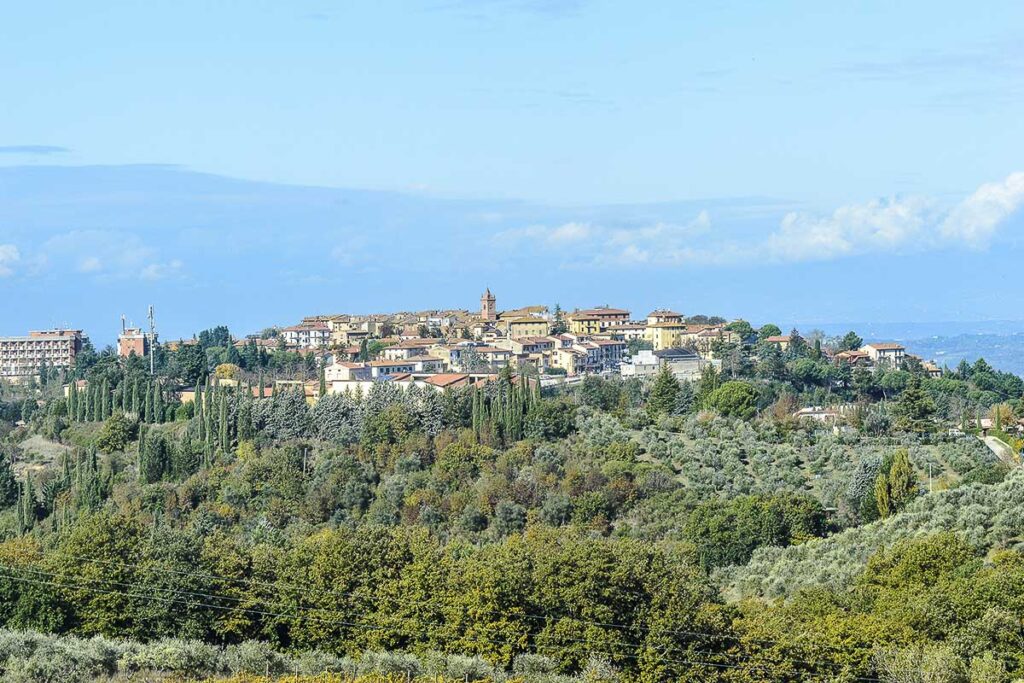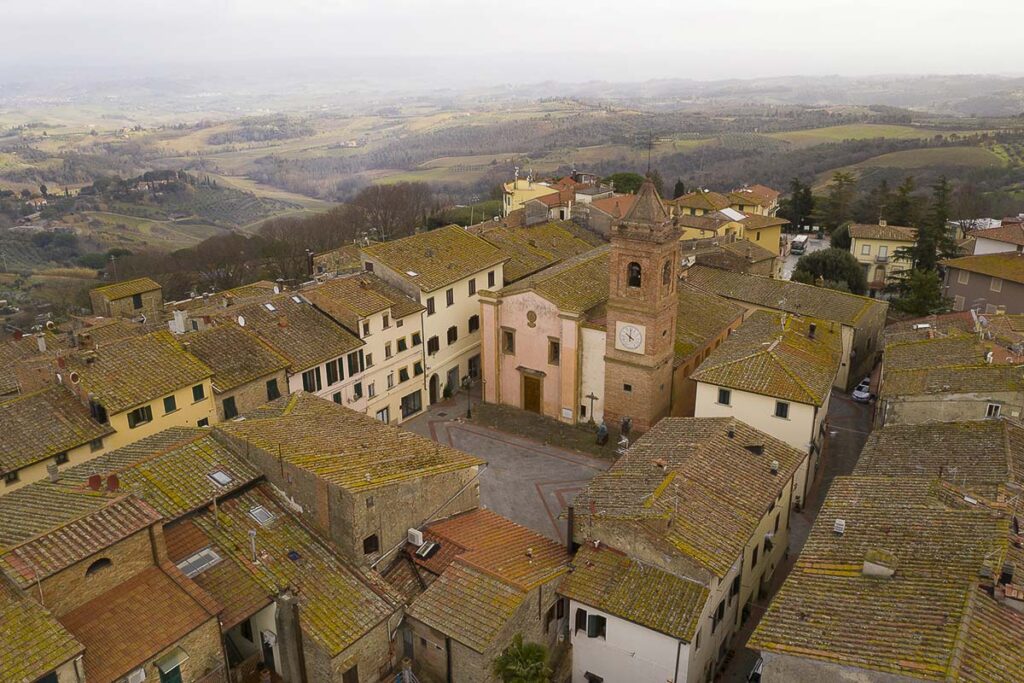
The Historic Town Centre
The Historic Town Centre: one of the ‘Most Beautiful Villages in Italy’, with views overlooking the Valdelsa
The ancient origins of the first settlement at Montaione have been lost in the sands of time. However, the earliest documentary evidence connected to this place name only dates back to the twelfth century. The Etruscan and Roman sites visible in the surrounding areas and the numerous finds on display at the Archaeological Museum are tangible evidence of a long history. Each place has its own history, but the way each passing era sews the seeds of life in every single region is what makes it truly unique. This is then nourished by the spirit of the people who inhabit these regions, who give life to layers of urban life, to expressions of civilization that cannot be found anywhere else.
The ancient village of Montaione is huddled on the top of a hill at 342 metres above sea level. From here, a garden terrace facing north provides a sweeping panorama across the Valdelsa and Valdarno river valleys, as well as views of the mountains of the Tuscan Apennines. Montaione became a castle in the decades between the end of the twelfth and beginning of the thirteenth century, and a document from 1257 tells us that, at that time, the autonomous municipality of Montaione had already been established, which later became part of the Republic of Florence, in 1369. The castle at Montaione had an oval shape, and was protected by a strong curtain wall fortified by 11 towers. It was accessible via two main gates, the Porta Fiorentina, also known as ‘great gate’, and the Porta Pisana, known as the ‘little gate’.
The street layout of the town consisted of buildings arranged in rows along three parallel streets, connected by very narrow alleyways, and it was dominated by the central square. Montaione’s most important religious building still overlooks the square, the Church of St Regolo with its bell tower. The ancient Praetorian Palace, its façade adorned with coats of arms made of stone and terracotta, is also located near the square and was built at the same time as the castle and fortifications. Another prestigious building, the Palazzo Mannaioni, is from a later time period. This historic residence dates back to the sixteenth century, built by a family of Florentine notaries who moved to Montaione.
Many changes have occurred over the centuries: the city walls, which were still visible in the Leopoldian Land Registry, have been destroyed; of the original 11 defence towers, only one has been preserved, on the northern side of the town, because it was converted into a private residence; the plan of the town expanded southward, with the creation of the enchanting Piazzetta Branchi; the riverbanks have become vegetable patches or gardens; the two city gates were destroyed during the Second World War. Nevertheless, the castle has retained its medieval layout. The streets, alleyways and squares, which once contained the workshops of potters and blacksmiths, and kilns and furnaces for tile making and, especially, for glass manufacturing, have remained the same; the perimeter of the ancient walls is still clearly visible, with the main points of access corresponding to the location of the ancient city gates, now destroyed; and as you walk around, you will notice that the entrances of many of today’s commercial establishments are still flanked by a window, as was the case with the ancient craft workshops.
All these features, combined with the beauty of the area, make Montaione one of the most beautiful villages in Italy.










